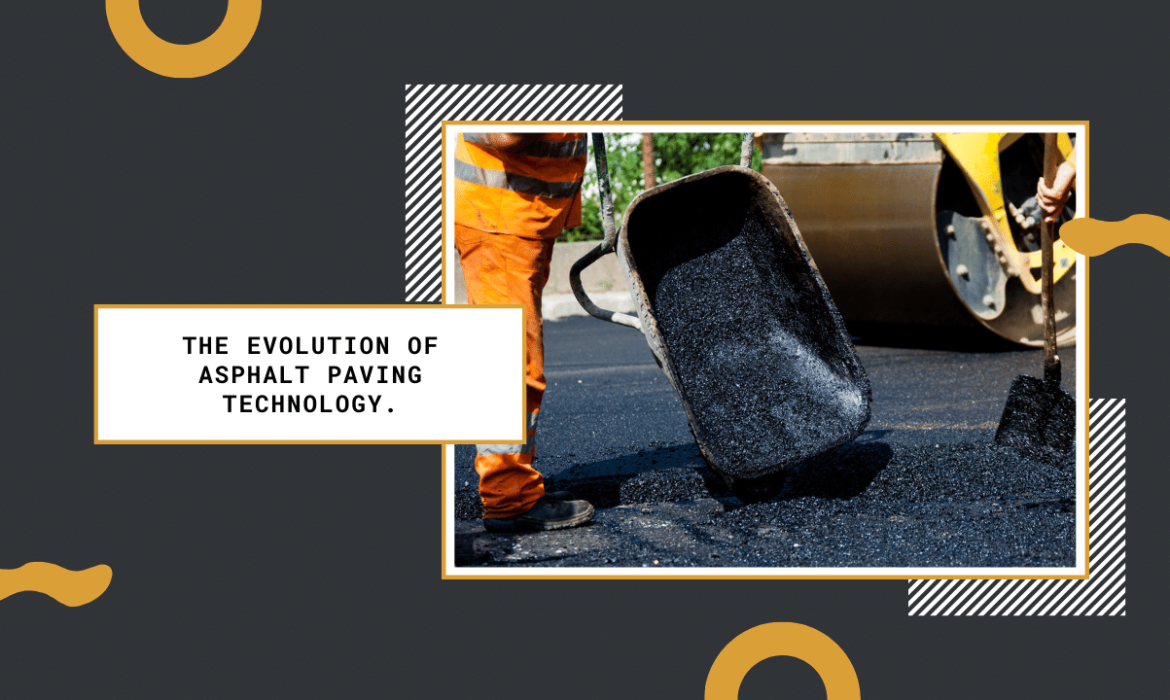Asphalt paving is one of the most critical components of modern infrastructure, and it is used for the construction of safe and smooth roads, parking lots, and other paved areas. The road surface is then laid with asphalt made of aggregates and bitumen to get an elastic and resilient pavement. The role of asphalt paving is invaluable as roads that are safe, efficient, and beautiful are made possible by asphalt, and it is the factor that leads to economic development.
The Evolution of Paving Technology: From Manual Labor to Automated Machines
The story of asphalt paving in road construction is very old, as different civilizations long ago used asphalt, a natural raw material. Asphalt paving, similar to that we use today, was invented in the early 19th century. Back then, paving was labor-intensive as the work force was involved in laying and compacting the asphalt mixture. This was not only a slow and arduous task, but also a very irregular process, often producing rough surfaces.

The paving industry was completely transformed with the advent of robotic devices. The steam roller and the mechanical spreader were the newcomers at the beginning of the 20th century. They were able to transform the process and added to the quality and productivity. Later on, upgrading the quality of the paver and the compactor made the paving better and more precise. The current machines that use the latest technology, including GPS and automatic grade control systems, have increased the accuracy and efficiency of asphalt paving.
The Modernization of Asphalt Mix Design and Quality Control System for Lasting Pavements
The durability of asphalt pavements is based on the asphalt mixture used in the construction process. Asphalt mix design is a selection of proper aggregates, bitumen, and additives with strong, flexible, and crack-resistant characteristics. The mix design has gone through a process of improvement where the quality of asphalt mixes has been raised to a high level. Thus, heavy traffic, storms, or other severe weather conditions do not affect their performance.
A critical factor in the asphalt mix is quality control; thus, it must be ensured that all specifications are followed. The building materials, the production process, and the performance tests of the completed pavement, make up this method. Technological advancements have now provided quality control with high precision and accuracy. The other option is to develop testing devices and software to predict pavement performance and quickly identify problems before construction accurately.
Sustainable and Green Practices in the Field of Safe and Ecological Pavement Maintenance
The biggest issue of the eco-friendly and sustainable asphalt paving industry is that the environmental impact is very low, and the environment lasts for a long time. A rapid paving method will save time and resources and allow traffic to flow freely, which means that there will be no traffic disruption and residents will have no inconvenience. This technology enables heating the asphalt mix at lower temperatures during production, lowering energy consumption and emission.
Future Trends in Asphalt Paving: Robotics, 3D Printing, and Smart Materials
The future generations of asphalt paving have unlimited applications in a world of technology as their playground. One of the technologies that can impact pavement works is robotic technology. Robots with paver capabilities can be used automatically from the beginning of the process to the end, including material delivery and compaction, which is faster and can be adjusted to give the right quality. Robots can be programmed to work in unsafe places for humans or in conditions where human workers cannot enter. Therefore, the risk to human workers is reduced.

Another technology is the 3D printing of the streets. The unique feature of this novel technology is that printers print each layer of asphalt or other road materials and are located on the spot. 3D Printing is a promising technology for fixing the precise pavement thickness and geometry, producing the least material waste, and the having the shortest construction time. This technology would allow sensors and other smart devices to be incorporated into the pavement, making it possible for real-time monitoring and maintenance work to be conducted.
As for intelligent materials, they are also viewed as indispensable for smart paving. These materials can repair themselves, extract pollutants from the air, and convert sun rays into electricity. Thus, it is important to develop eco-pavements resistant to pavement wear, which means they are both environmentally friendly and produce energy.
Asphalt paving has gone through stages of technological development, from human power to automated equipment, and this will persist with the discovery of new methods and trends. Accordingly, upgrading should be done in the paving industry so that the current infrastructure specifications can be met, and efficiency, durability, and sustainability can be maintained.
These days, the paving industry also faces the problem of environmental sustainability, which is another issue. The latest road technologies, like permeable asphalt pavement and porous interlocking concrete pavers, are made in a way that when the rainwater seeps into the ground rather than running off, it then leads to the improvement of the quality of the water. Employing recycled material like reused asphalt pavement (RAP) and recycled tire rubber, as well as addressing the waste problem, provides an extra advantage in enhancing pavement performance.

